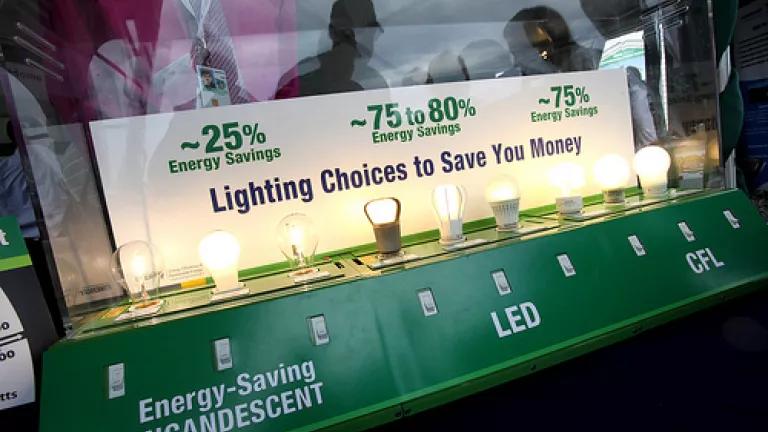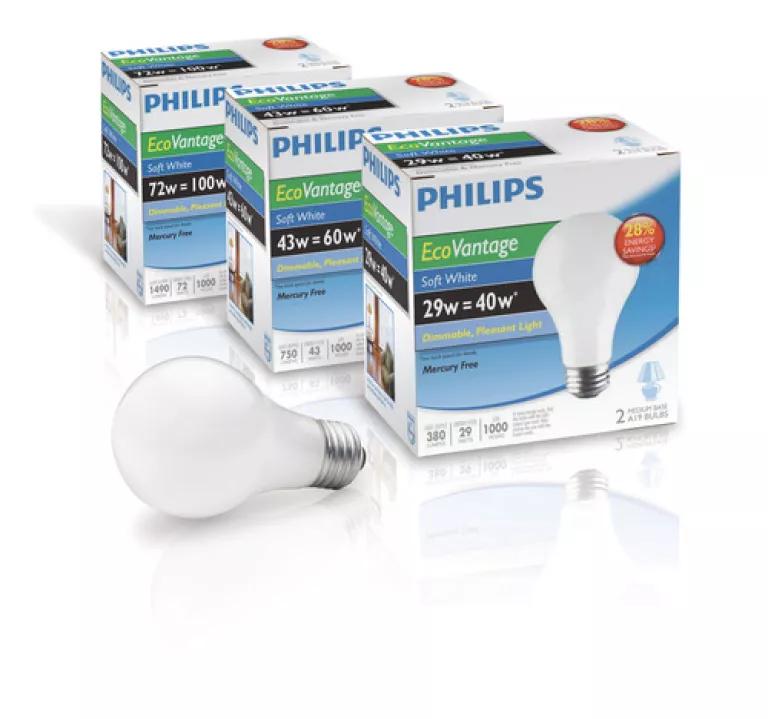Budget Bill Light Bulb Enforcement Rider: Pointless Political Theater with Potential To Hurt American Manufacturers and Jobs

Congress is moving forward on a catch-all spending bill that restores some much needed funding for health and environment safeguards the American people depend on. That’s good news. But the bill also includes some misguided provisions or “riders” on climate and energy that are wholly unrelated to the budget. These riders move us backward and shouldn’t be there.
A prime example is a provision that prevents the federal government from enforcing light bulb energy efficiency standards that Congress passed into law by a bipartisan majority in 2007 and was signed into law by President George W. Bush. This rider was first attached to a budget bill back in 2011 –after an effort to repeal the standards failed -- and has also been slipped into subsequent budget bills and continuing resolutions at the behest of House conservatives.
So what does this rider do? Fortunately, not much. It’s mostly just political theater. After all, the light bulb energy efficiency standards that Congress enacted are still the law, are being phased in as planned, and U.S. lighting manufacturers have pledged to comply with them. Consumers have a wider range of light bulbs to choose from today than ever before, thanks to the innovation sparked by the standards. Across the country, consumers are already using more efficient light bulbs, including efficient incandescents, those squiggly CFLs and the new super-efficient LED bulbs. Polls show that the majority of Americans like them, in both blue states and red. The typical American household will save about $100 a year through lower electricity bills thanks to these efficiency standards.
Thanks to lighting innovations sparked by the bipartisan Energy Independence and Security Act of 2007, American households can save an average of $100 a year or more on electricity. (Photo: US Dept. of Energy Solar Decathlon)
U.S. manufacturers also strongly support energy efficiency standard and are creating American jobs to meet the new demand for efficient lighting right here in the United States, in states like Ohio and North Carolina. There are thousands of new American jobs in manufacturing, research, development, design and marketing of new lighting options. In fact, at least one American manufacturer has even moved some of its operations back to the U.S. from China to meet demand for the new, more efficient bulbs. How often do we see that happen? Add to all that that these lighting standards will result in power plant pollution cuts equivalent to taking 17 million cars off the roads each year – or all the electricity consumed by the homes in Texas each year.
No wonder these light bulb efficiency standards have widespread support from consumer groups, from lighting manufacturers, from labor groups, religious groups, environmental groups, business groups, and Republican groups.
So if the rider is just “catnip for conservatives” as Politico reported this morning, why are we concerned about it all? Well, because it just plain bad and backwards energy policy.
Most importantly, it opens the door for foreign manufacturers to sell substandard bulbs in the United States and undercut U.S. companies who are complying with the energy-saving standards. "Given that American manufacturers have committed to following the law regardless of whether or not it is enforced," Ohio Congresswoman Marcy Kaptur explained on the House floor during a debate over a similar light bulb rider last summer, "the only benefit of this ill-informed rider is to allow foreign manufacturers —who may not feel a similar obligation—to import noncompliant light bulbs that will not only harm the investments made by U.S. companies, but place at risk the U.S. manufacturing jobs associated with making compliant bulbs."
But that’s not all. Ill-conceived efforts like this rider distract us and move us a backward as a nation, not forward, on efforts to build the clean energy economy. They undermine President Obama’s ambitious climate plan which relies significantly on efficiency standards to achieve its global warming pollution reduction goals. They deny the well-documented success of energy efficiency in saving consumers money, creating jobs and cutting pollution.
What we need now as a nation are new jobs, money savings for cash-strapped consumers and businesses, and technologies that significantly cut the global warming pollution that damages our kids’ health, contributes to extreme weather events like Superstorm Sandy and threatens the planet.
And just to close: here’s another reminder that consumers who love incandescent bulbs can continue to use them. No technologies are banned. There are many efficient incandescent bulbs to choose from: they have the same shape and produce the same quality of light but are 30% more efficient. The efficient incandescent light bulb shown below is just one example of the many efficient choices that are widely available if consumers want them. Check out NRDC’s new lighting guide for the full range of bulb choices, old and new.

(Photo: Philips)

